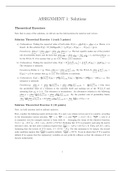Antwoorden
EconometricsAssignment_2_sol_2019
- Vak
- Econometrics
- Instelling
- Tilburg University (UVT)
See the package deal for assignments answers! Answers to the second assignment (2019) of the course Econometrics of the EOR program of Tilburg University
[Meer zien]




